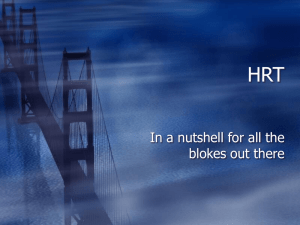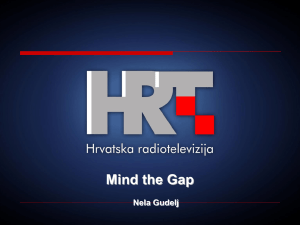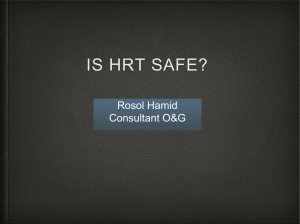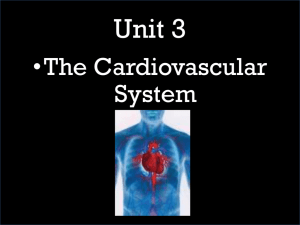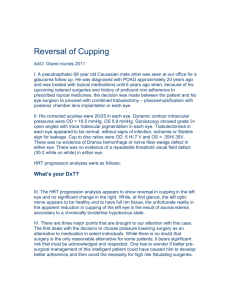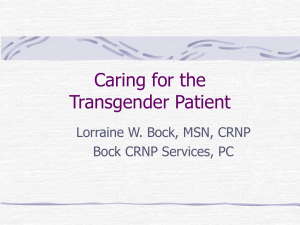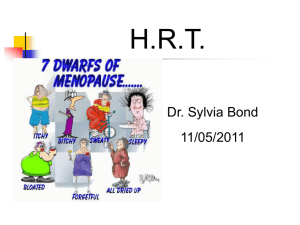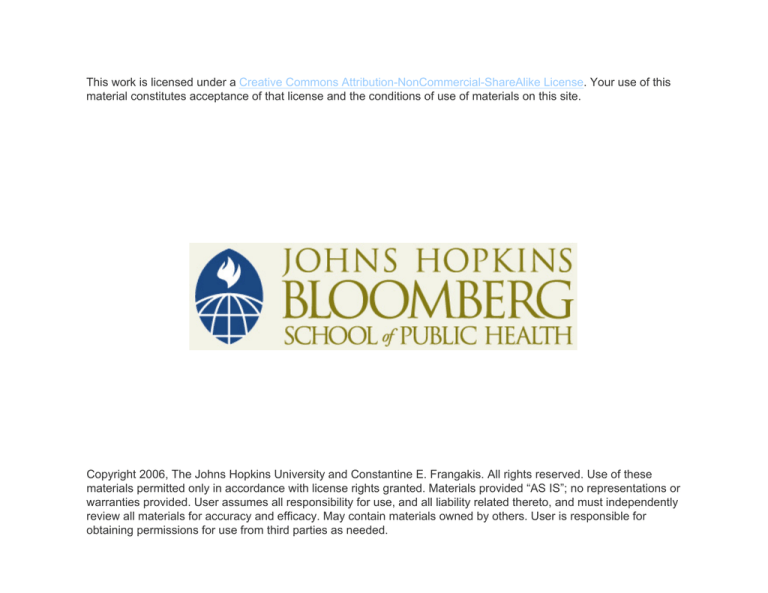
This work is licensed under a Creative Commons Attribution-NonCommercial-ShareAlike License. Your use of this
material constitutes acceptance of that license and the conditions of use of materials on this site.
Copyright 2006, The Johns Hopkins University and Constantine E. Frangakis. All rights reserved. Use of these
materials permitted only in accordance with license rights granted. Materials provided “AS IS”; no representations or
warranties provided. User assumes all responsibility for use, and all liability related thereto, and must independently
review all materials for accuracy and efficacy. May contain materials owned by others. User is responsible for
obtaining permissions for use from third parties as needed.
What do we mean by cause
in public health ?
Constantine E. Frangakis
Department of Biostatistics
http://www.biostat.jhsph.edu/~cfrangak
Motivation
Work and discussions by colleagues and speaker.
Penrose, R (1989). The emperor’s new mind. Oxford.
3
Outline
1. Causal effects: what do we mean ?
2. Do we do research based on what we mean ?
3. Challenges to current approach
4
1.
Causal effects: what do we mean ?
Example (a)
When we say:
“More women will survive cancer because
(thanks to) the newer screening method”
we mean:
“if women get screened with the new method,
more of them will survive than if the same women
get screened with the existing method”
5
Example (b)
When we say:
“Hormone replacement therapy (HRT) increases the
risk of heart problems in (a group of) women”
we hope we mean:
“the group of women will have more heart problems if
they get HRT versus if they do not get HRT”
6
Notes:
By “causal effect”, in principle, we mean a comparison of
outcomes if the same group of people at the same time
were to be given two different treatments, so
a Causal Effect is a result of
an intervention.
We cannot directly observe a causal effect, although we
can estimate it under assumptions/or designs with
comparable groups
7
2.
Does usual statistical research reflect
what we mean by causal effects ?
We argue that it does not always, and that this
impacts, ultimately, whether we really choose
the right treatments.
See an example
8
Example: a hypothetical 2phase study on HRT
.
Women in a 2-time study
on effect of hormone
replacement therapy
(HRT) on heart problems
Doctors randomize
women to no HRT/ HRT,
based on evidence of
side-effects
Is sustained HRT better
for women, than no HRT ?
Æ Three comparisons …
9
“Correct” comparison :
from the data, we can
show that :
% of women with heart
problems, if all were given
HRT at both times =
60 %
but
% of women with heart
problems, if none was given
HRT at both times =
40%
So, sustained HRT causes
more heart problems
10
“Crude” comparison
% of women with heart
problems, among those
who get HRT at both times
40%
% of women with heart
problems, among those
who get no HRT
40%
So, “crude comparison”
gives equal treatments
11
“Adjusting” for side effects
% of women with heart
problems, among those
who get HRT at both times,
and have no side effects:
20%
% of women with heart
problems, among those
who get no HRT,
and have no side effects:
40%
So, “adjustment” favours
the worst treatment
12
“Adjusting for” side effects
% of women with heart
problems, among those
who get HRT at both times,
and have no side effects:
20%
% of women with heart
problems, among those
who get no HRT,
and have no side effects:
40%
So, “adjustment” favours
the worst treatment
Note: the above “adjustment” as a regression is sometimes
represented by:
Y month 18 ~ side effects month 12 + treatment month 6+ treatment month 12
13
How did we get the correct answer ?
By using what we mean by causal effect:
the comparison of the two clinical outcomes of women,
if they were given HRT versus if they were not.
For a particular woman, these two outcomes are called
“Potential Outcomes” (Rubin 74).
14
How did we get the correct answer ?
By using what we mean by causal effect:
the comparison of the two clinical outcomes of women,
if they were given HRT versus if they were not.
For a particular woman, these two outcomes are called
“Potential Outcomes” (Rubin 74).
What does it mean “we use” them if they are not observed ?
It means we use them as unknowns with the (correct) logic,
just as we can solve multiple equations with multiple
unknowns
15
How did we get the correct answer ?
By using what we mean by causal effect:
the comparison of the two clinical outcomes of women,
if they were given HRT versus if they were not.
For a particular woman, these two outcomes are called
“Potential Outcomes” (Rubin 74).
What does it mean “we use” them if they are not observed ?
It means we use them as unknowns with the (correct) logic,
just as we can solve multiple equations with multiple
unknowns
Why does the usual “adjustment” generally fail ?
Because the logic operates on the Potential Outcomes, and
not directly on the observed data
16
3.
Challenges to the meaning of
causal effect used in public health
The usual meaning has at least two key characteristics:
1) Consistency:
a process evolves the same way whether we observe
(or otherwise measure) the process or not
2) Temporality:
the effect of a cause “happens” after the cause
17
On “consistency”
The currently accepted physical theory for the
microscopic level is quantum mechanics:
according to quantum mechanics:
a measurement (even if not by observation)
causes a processes to change its values,
but also
a process obeys different rules when not
being measured than when it is being
measured
18
On “temporality”
Most physical laws describe processes in time, but
do not explain why time flows one way and not the
other.
19
On “temporality”
Most physical laws describe processes in time, but
do not explain why time flows one way and not the
other.
The 2nd thermodynamic law does address time flow,
saying that systems will evolve to disorder
20
On “temporality”
Most physical laws describe processes in time, but
do not explain why time flows one way and not the
other.
The 2nd thermodynamic law does address time flow,
saying that systems will evolve to disorder
In this law, cause and effect are reverse in time
(teleologic): the cause is the future state of disorder,
to which the present system is attracted.
21
Can it happen that a cause-effect be so different
than what we “feel” ?
22
Can it happen that a cause-effect be so different
than what we “feel” ?
It happens very often !
Think of a child watching a movie of a car going
right, and observing its wheels turning counterclockwise.
23
Can it happen that a cause-effect be so different
than what we “feel” ?
It happens very often !
Think of a child watching a movie of a car going
right, and observing its wheels turning counterclockwise.
24
Can it happen that a cause-effect be so different
than what we “feel” ?
It happens very often !
Think of a child watching a movie of a car going
right, and observing its wheels turning counterclockwise.
25
Can it happen that a cause-effect be so different
than what we “feel” ?
It happens very often !
Think of a child watching a movie of a car going
right, and observing its wheels turning counterclockwise.
26
Can it happen that a cause-effect be so different
than what we “feel” ?
It happens very often !
Think of a child watching a movie of a car going
right, and observing its wheels turning counterclockwise.
27
Can it happen that a cause-effect be so different
than what we “feel” ?
It happens very often !
Think of a child watching a movie of a car going
right, and observing its wheels turning counterclockwise.
28
Can it happen that a cause-effect be so different
than what we “feel” ?
It happens very often !
Think of a child watching a movie of a car going
right, and observing its wheels turning counterclockwise.
The child* would conclude that:
“wheels spinning counter-clockwise” cause “the
car to move right” !
* If the child learns about frequencies, it will
understand differently.
29
How are these challenges relevant to public health ?
Research in public health becomes more focused
at the microscopic level
Suppose
a) causality at that level is dominated by
teleologic laws, and
b) we try to explain observations by a usual
meaning of causal effects
Then, our prediction abilities (e.g., for processes
ultimately causing diseases) will reach a plateau,
perhaps long before reaching the humanly
explainable limit
30
Then, our prediction abilities (e.g., for processes
ultimately causing diseases) will reach a plateau,
perhaps before reaching the humanly explainable
limit
limit
explainable
processes
limit if we ignore laws at micro-level
decreasing distance scale
of studied process
31
Remarks
1) By a Causal Effect in public health currently we mean a
result of an intervention
2) Much of statistics addressing causal effects in public
health is not based on what we mean, yet this can be done
3) with the focus of public health at the microscopic level,
flexible concepts of causal effects, such as stemming from
potential outcomes, become increasingly important for
understanding and predicting processes
32

